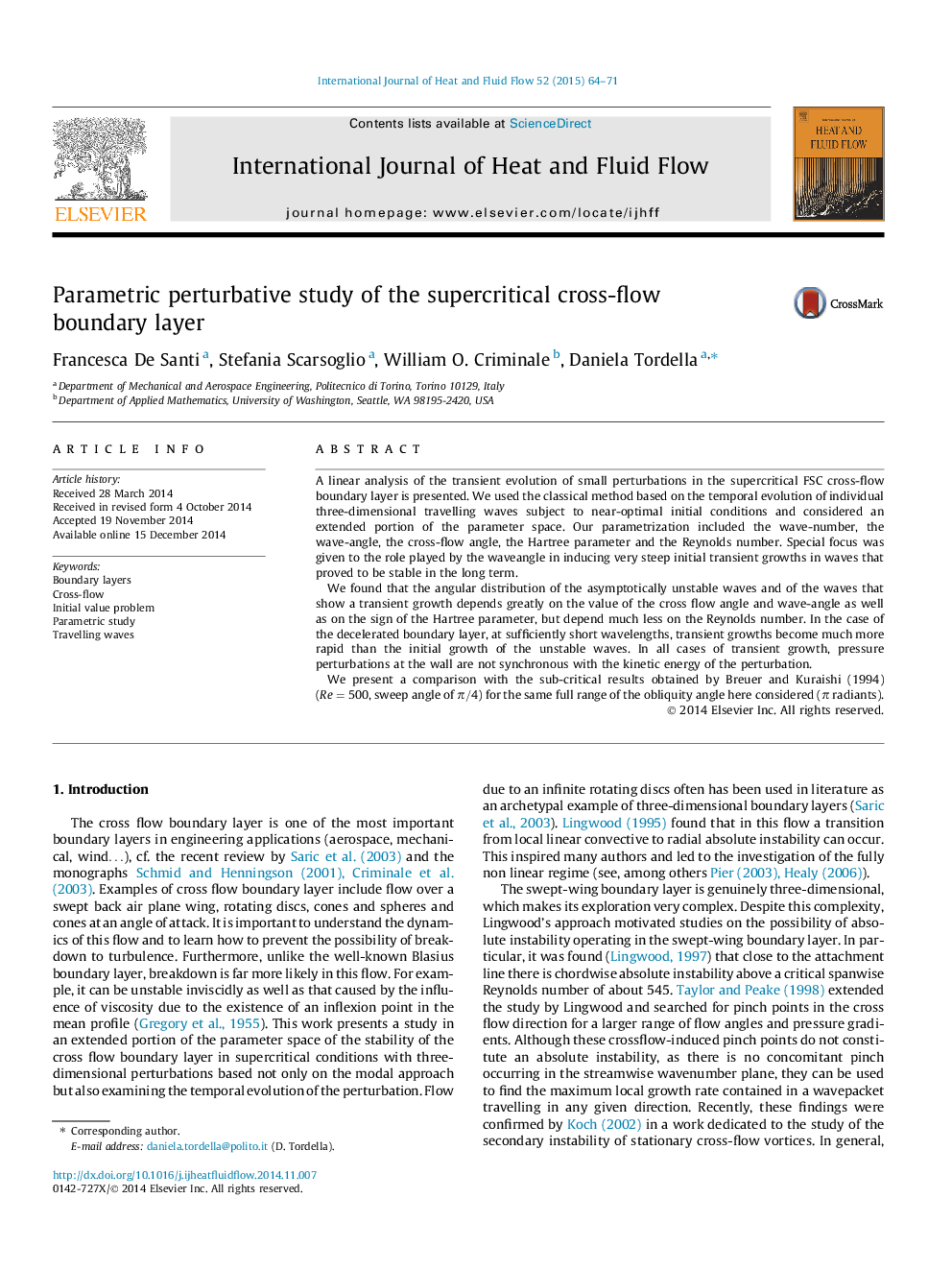| Article ID | Journal | Published Year | Pages | File Type |
|---|---|---|---|---|
| 655120 | International Journal of Heat and Fluid Flow | 2015 | 8 Pages |
•Parametric study of 3D low disturbances in the crossflow BL, based on five parameters.•Focus on the role of the perturbation wavevector direction.•When wavevector points upstream the wave energy is initially strongly amplified.•In decelerated BL, the most unstable waves are nearly stream or span-wise aligned.•Parameter’s region where perturbed pressure maxima anticipate the kinetic energy ones.
A linear analysis of the transient evolution of small perturbations in the supercritical FSC cross-flow boundary layer is presented. We used the classical method based on the temporal evolution of individual three-dimensional travelling waves subject to near-optimal initial conditions and considered an extended portion of the parameter space. Our parametrization included the wave-number, the wave-angle, the cross-flow angle, the Hartree parameter and the Reynolds number. Special focus was given to the role played by the waveangle in inducing very steep initial transient growths in waves that proved to be stable in the long term.We found that the angular distribution of the asymptotically unstable waves and of the waves that show a transient growth depends greatly on the value of the cross flow angle and wave-angle as well as on the sign of the Hartree parameter, but depend much less on the Reynolds number. In the case of the decelerated boundary layer, at sufficiently short wavelengths, transient growths become much more rapid than the initial growth of the unstable waves. In all cases of transient growth, pressure perturbations at the wall are not synchronous with the kinetic energy of the perturbation.We present a comparison with the sub-critical results obtained by Breuer and Kuraishi (1994) (Re=500Re=500, sweep angle of π/4π/4) for the same full range of the obliquity angle here considered (ππ radiants).
